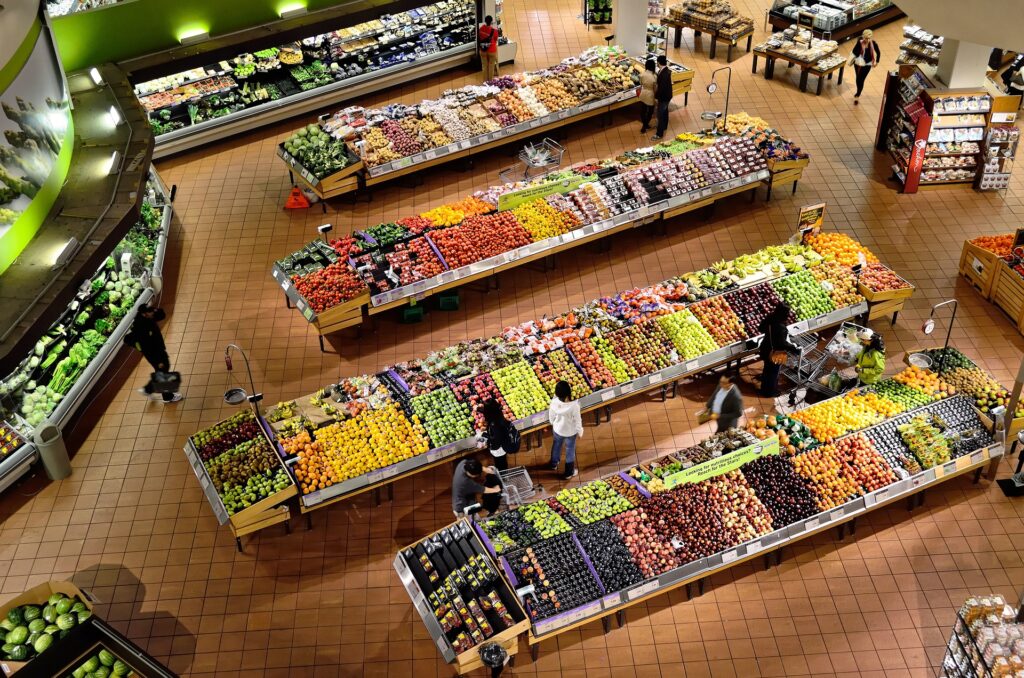How to plan ahead, work within a budget and feel confident when grocery shopping.
By Willem Gokemeijer

Photo by ElasticComputeFarm
College may be advertised as the best years of your life, but they certainly won’t be the easiest. Thrown into a new environment, your life will change drastically from what it was before. You will be forced to juggle new responsibilities. It can be easy to let one of the most important ones, feeding yourself, go by the wayside, especially if you haven’t shopped for yourself before. It can be even more daunting if your budget is tight and you find yourself unable to stretch your dollars to cover the cost of a decent diet.
Not to fear. Here is a quick guide to buying groceries, from budgeting to planning to executing.
Understand you are not alone.
It can feel isolating or embarrassing to talk about not having enough food, but it’s a fairly common occurrence among college students. Just over a third of undergraduate students are food insecure, according to the Student Experience in the Research University Survey (SERU) at the University of Minnesota.
In this case, food insecurity means that students at least somewhat agreed with the statement “The food that I bought just didn’t last and I didn’t have the money to get more.” This statistic has also been rising. Only 24 percent of students were food insecure in 2019.
Karin Onarheim, a macro social worker and adviser for the Nutritious U food pantry at the University of Minnesota, says rising food insecurity is because student financial support is not keeping up with increases in food costs, which have skyrocketed due to inflation following the pandemic.
“It’s like this perfect storm,” Onarheim said. “A lot of students are just trying to make do and then prices keep going up.”
Onarheim said she has seen kids normalize having less food by opting not to eat breakfast or fasting and saying that it’s for a diet. She tries to combat this normalization by making it easy to get help.
Use resources, such as a food pantry.
The Nutritious U food pantry, which she helps run with student volunteers, provides food to any student who visits, with no requirements needed. The pantry runs three days a month.
When a student enters the pantry they are handed a basket and can choose up to seven items. The pantry has fruits and vegetables as well as spices and shelf-stable foods. A good portion of the food comes from the University farms themselves, especially in the fall.
She surveys the students that come into the food pantry and about 75 percent of them are coming because they can’t afford food and the remaining quarter because of the convenience.
The University of Minnesota also has a separate pantry on the Saint Paul campus which is run through a bus filled with food. There is also a free meal on Thursdays program and a weekly grocery store at the student union that is cheaper than typical groceries.
Some students can also qualify for federal food assistance with groceries through a program called SNAP (Supplemental Nutrition Assistance Program) which gives participants 200 dollars per month. Nutritious U has a list of these programs on its website.
Onarheim said the biggest priority she has right now is getting the word out and promoting the resources that are available. She wants to normalize seeking assistance.
“It’s okay to get help here and there, Onarheim said. “I want students to just talk to their friends and say ‘Hey, want to come get groceries with me at the food pantry.”
Seek cheaper grocery options.
Don’t just go to the most convenient grocery store.
It helps to look around. Many campuses have grocery stores on campus that may be convenient but are more expensive than options a little more out of the way.
Take the University of Minnesota for example. Target and Fresh Thyme are the nearest grocery options for most students. Cub Foods and Aldi are 5-10 minute drives away.
Looking at the prices of five basic items at the stores (a banana, a gallon of milk, a pound of beef, frosted mini-wheat cereal, and an avocado) it’s clear that these stores are not all created equal.
Cub Foods is 17% more expensive than the average amongst the stores, Fresh Thyme was 12% more expensive and Target was 7% more expensive. Given the small amount of items those all may be within the margin of error. Aldi, however, was 38% less expensive than the average.
Using that data, if you were spending $50 a week at Target, you may be able to save almost $20 a trip by going to Aldi. While there won’t always be such a stark example, expanding your grocery store range may offer you some superior options.
Plan ahead to avoid waste.
Planning ahead your meals for the week can help you not overbuy at the grocery store and avoid rotting vegetables in your fridge. It can be as simple as making a grocery list before you leave or as complex as using a food delivery service, such as Instacart.
Russell Gokemeijer, my brother and a student at the University of San Diego, shares a group Intsacart membership ($100 a year) with his two roommates. They can choose from any of the dozens of stores in the area. The food is also priced very similarly to the prices in-store.
A slightly different option is services like Hello Fresh and Blue Apron (there are several others) which will ship pre-portioned ingredients and recipes right to your door. Giving you a variety of meals without the headache of planning them out.
“The time-saving alone is worth the cost for me,” Russell said. “I recommend it to all my friends, it’s a good deal and it’s really easy to use.”